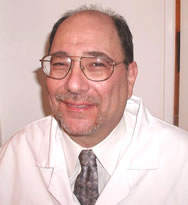ABSTRACT
In this article, the fifth in a series reviewing the role of food workers in foodborne outbreaks, background information on the routes of infection for food workers is considered. Contamination most frequently occurs via the fecal-oral route, when pathogens are present in the feces of ill, convalescent, or otherwise colonized persons. It is difficult for managers of food operations to identify food workers who may be excreting pathogens, even when these workers report their illnesses, because workers can shed pathogens during the prodrome phase of illness or can be long-term excretors or asymptomatic carriers. Some convalescing individuals excreted Salmonella for 102 days. Exclusion policies based on stool testing have been evaluated but currently are not considered effective for reducing the risk of enteric disease. A worker may exhibit obvious signs of illness, such as vomiting, but even if the ill worker immediately leaves the work environment, residual vomitus can contaminate food, contact surfaces, and fellow workers unless the clean-up process is meticulous. Skin infections and nasopharyngeal or oropharyngeal staphylococcal or streptococcal secretions also have been linked frequently to worker-associated outbreaks. Dermatitis, rashes, and painful hand lesions may cause workers to reduce or avoid hand washing. Regardless of the origin of the contamination, pathogens are most likely to be transmitted through the hands touching a variety of surfaces, highlighting the need for effective hand hygiene and the use of barriers throughout the work shift.
In this article, the fifth in a series on food worker- associated outbreaks, the ways that pathogens can enter the food environment are discussed. In previous articles, the different outbreaks, the factors contributing to them, and the infective doses and carriage of the implicated pathogens have been described (46, 119-121). Pathogens that can infect food workers have multiple sources, and infected workers in turn become potential sources of contamination in food processing and preparation facilities. The pathogens then can become a part of the transient or resident flora. According to Snyder (116), transient pathogen sources include (i) fecal contamination on hands that remains after using the toilet, changing diapers, or cleaning up after pets; (ii) raw products (e.g., meat, poultry, fish, or unwashed fruits and vegetables); and (iii) infected cuts and boils that are touched or picked, or an infected fingernail. Transient pathogens are excreted in feces and various body fluids or tissues by persons infected or colonized by these pathogens. When diarrhea results in many liquid stools per day, hands easily become contaminated because billions of pathogen cells are present (6). However, many colonized individuals may be asymptomatic, or symptoms may be so mild that they are considered part of a normal digestive upset. Although usually there are fewer pathogen cells per gram of solid stool than of liquid stool, the colonized individuals may erroneously think they are not a threat during food preparation and may become careless in their hygiene habits, allowing fecal contamination of food and the environment, including food contact surfaces. For viral pathogens, especially noroviruses and rotaviruses, vomitus can contain a concentration of particles similar to or greater than that in liquid diarrhea (24), and transmission and subsequent illness has resulted from cleanup procedures. Urine has occasionally been a means of pathogen transmission, typically only for organisms that invade the organs and blood supply, such as hepatitis A virus (HAV).
Resident sources of pathogens are less common and include permanent inhabitants on the epidermal skin layer, often protected in cracks and crevices where they cannot be removed easily through normal washing procedures. Although most microflora do not cause foodborne illness, Staphylococcus aureus can be a resident skin pathogen, multiplying in moist, warm areas such as the groin and frequently residing in the nasopharynx, from where it contaminates the skin on a regular basis through hand contact. This organism can be released though perspiration, aerosols from sneezing, and saliva onto food or food contact surfaces, cutlery, etc. Food workers also frequently develop small cuts or burns in food preparation settings, and these wounds can become infected. Infected areas typically contain millions of S. aureus cells or group A streptococci, which can cause heavy contamination of foods handled by these workers or can cause impetigo. Staphylococcal nasal carriage seems to predispose people, particularly children, to the development of impetigo (71). Long-term or permanent carriers of pathogens such as Salmonella Typhi and some parasites also may be considered resident pathogen sources because shedding can occur on an intermittent basis over months or years. Injuries and infections reduce the inclination of workers to wash and dry their hands thoroughly and frequently. Quantitative data, where available, accentuate the importance of potential pathogen transmission though contaminated excretions and are discussed in detail in the following sections.
FECES AS A SOURCE OF CONTAMINATION FROM INFECTED AND COLONIZED WORKERS
. . .Continue to read rest of article (PDF).
Dr. Ewen Todd is a Food Safety Expert with over 45 years of knowledge and experience in general food safety and Food Microbiology Issues. Specifically, he has extensive experience the reporting and surveillance of Foodborne Disease, as well as development of analytical methods for identifying foodborne pathogens. As a result of his work with the industry and his knowledge of foodborne disease, Dr. Todd has influenced research programs and regulatory approaches taken by the Health Protection Branch of Health Canada. In the US, he held the position of Director of the National Food Safety and Toxicology Center and the Food Safety Policy Center at Michigan State University.
©Copyright - All Rights Reserved
DO NOT REPRODUCE WITHOUT WRITTEN PERMISSION BY AUTHOR.










